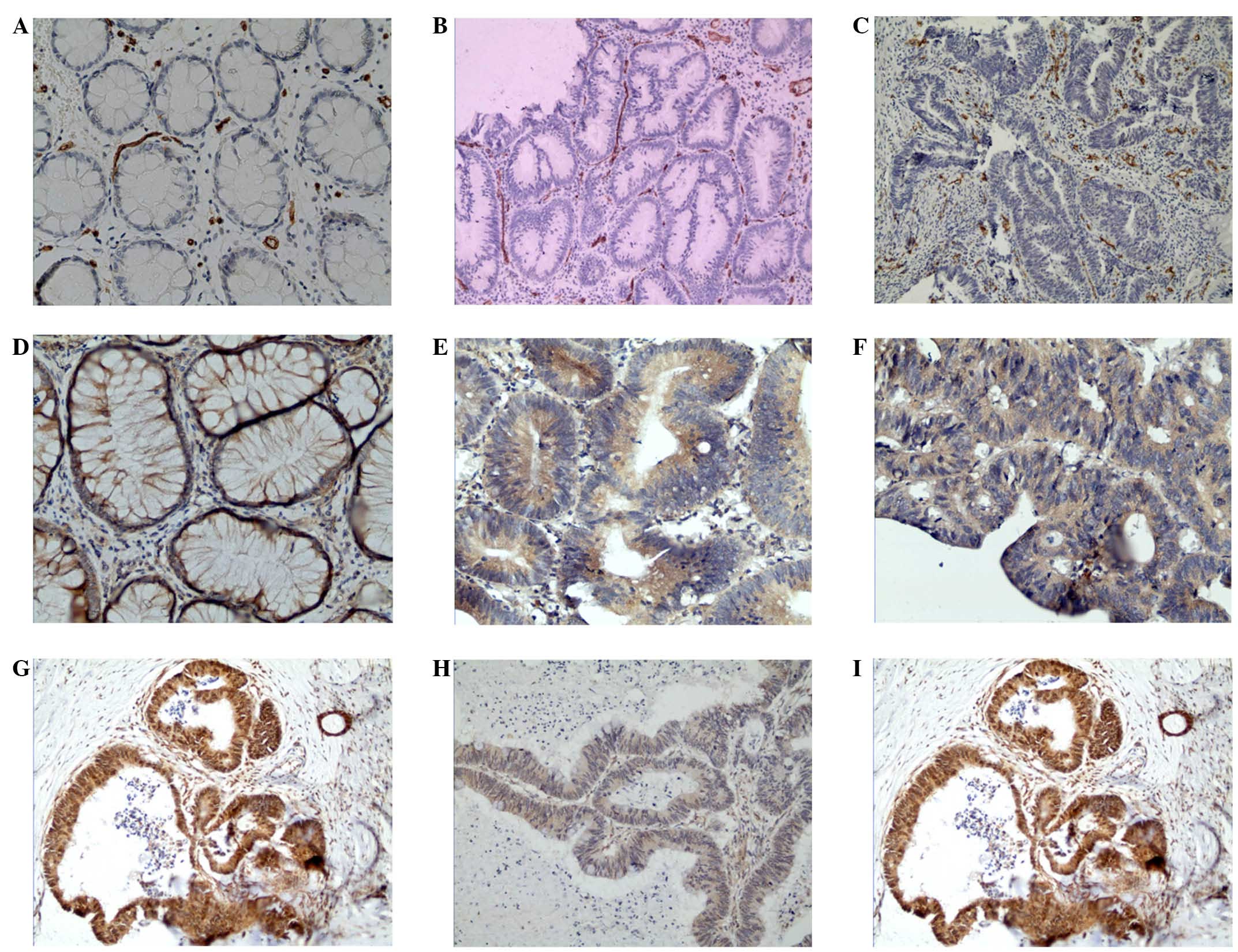Correlation between microvascular characteristics and the expression of MVD, IGF-1 and STAT3 in the development of colonic polyps carcinogenesis
- Authors:
- Published online on: November 24, 2016 https://doi.org/10.3892/etm.2016.3927
- Pages: 49-54
-
Copyright: © Liu et al. This is an open access article distributed under the terms of Creative Commons Attribution License.
Metrics:
Total
Views: 0 (Spandidos Publications: | PMC Statistics:
)
Total PDF Downloads: 0 (Spandidos Publications: | PMC Statistics:
)
Abstract
The aim of the present study was to investigate the correlation between vascular characteristics under narrow band imaging (NBI) and the expression of angiogenic factors of colorectal carcinoma and adenoma, and to evaluate the feasibility of NBI in vivo visualizing angiogenesis. Patients with colorectal polyps, which were pathologically confirmed as early carcinoma and adenoma, were recruited and examined by NBI. The vascular pattern was classified into type I (invisible or faintly visible vasculature), type II (clearly visible microvasculature that is regularly arranged in a round, oval honeycomb‑like pattern) and type III (clearly visible microvasculature that is irregularly arranged in size and caliber or has irregular winding). Immunohistochemical staining was performed by cluster of differentiation (CD)34, insulin‑like growth factor (IGF)‑1 and signal transducer and activator of transcription 3 (STAT3). The histological results were compared with the vascular pattern under NBI. Overall, 64 sites (15 adenocarcinomas, 29 adenomas and 20 normal) from 58 patients were recruited in the study and examined by NBI. A higher proportion of adenomas (82.1%, 23/28) and adenocarcinomas (66.7%, 10/15) had vascular patterns II and III, respectively. The expression of microvessel density (MVD)‑CD34 and IGF‑1 in normal mucosa compared with adenomas and adenocarcinomas was significantly different (P<0.0001 and P=0.0062, respectively). MVD‑CD34, IGF‑1 and STAT3 expression in the sites displayed with vascular patterns I, II, and III was different significantly (P<0.0001, P=0.0010 and P=0.0055, respectively). The spearman correlation coefficient between NBI vascular pattern and MVD‑CD34, IGF‑1 and STAT3 expression was 0.67, 0.41 and 0.40, respectively. In conclusion, vascular‑pattern analysis and the use of an NBI system may be a promising tool for evaluating angiogenesis of colorectal lesions in real-time endoscopy.












